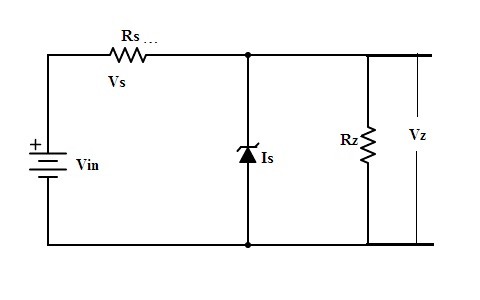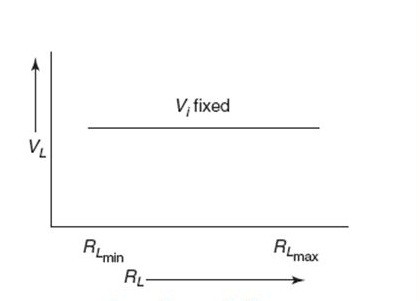A Zener diode is a type of semiconductor diode. Generally, a normal diode with p and n junction will not function or blocks the flow of the charge carriers’ results in no flow of the current is seen during the reverse biasing of the device. Hence this condition is known as Breakdown. The main purpose of designing this device is to make the device to conduct in the reverse biasing condition. It can normally function just like a diode with p-n junction in forwarding biased condition. In this type of diode, there exists two cases of breakdown one are known as avalanche breakdown and the other is known as Zener breakdown.
Zener Diode as the Voltage Regulator Theory
The purpose of the Zener diode is to stabilize the value of the output voltage. Hence it can be used as the voltage regulator. A resistor that limits the current is connected across the load along with the Zener diode. This resistor is responsible for the stabilization of the output.
In this case, the Zener diode consists of an anode and the cathode as its terminals. The terminal cathode is connected with the positive side of the supply of DC. Hence this connection is known as reverse biasing and it makes the diode to operate in the reverse bias condition.
The purpose behind the resistor connection is to limit the maximum flow of the current through the circuit. If the load is not powered up with any supply then there is no evident load current. So that the total amount of the flow of current is seemed to be through the diode. This results in the dissipation of the power to be at the maximum.

Once the load is connected in parallel in such a way that in order to maintain the same amount of the voltage at the resistor as well as the diode. In order to make the voltage stabilize first of all the current passing through the diode must be limited to the minimum value. Then only the stabilization of the voltage becomes more effective.
The maximum limit for the current is determined by the rating that is provided. But the only problem for this kind of circuits is that they tend to generate noise as the DC supply is provided. But this kind of noise doesn’t affect the operation of stabilizing. The capacitor is also connected across the diode so that the output generated gets smoothed because the capacitor acts as a filter.
Please refer to this link to know more about Zener Diode MCQs
Zener Diode Load Regulation
There exist two types of regulation one with the variation of the voltage applied at the input is known as line regulation and the other with the load resistance is known as the load regulation.
The value of the voltage is stabilized and adjusted based on the varying load values. But the operation is dependent on the finite range. Basing on the input value of the voltage applied the current varies.

Please refer to this link to know more about LDO Regulator & Voltage Regulators.
Please refer to this link for Choosing resistor values for diodes.
Overall the connection of resistor in parallel form and the design of the Zener diode is to limit the flow of the value of the voltage so that changes in the current doesn’t affect the device. Hence it is preferred in the protection circuitry so that high currents and the fluctuation in the current should not affect the functionality of the device. The Zener diode behaves ideally during forwarding bias and the conduction possibility in reverse bias. Now can you list other than voltage regulation where the Zener diode is been utilized?